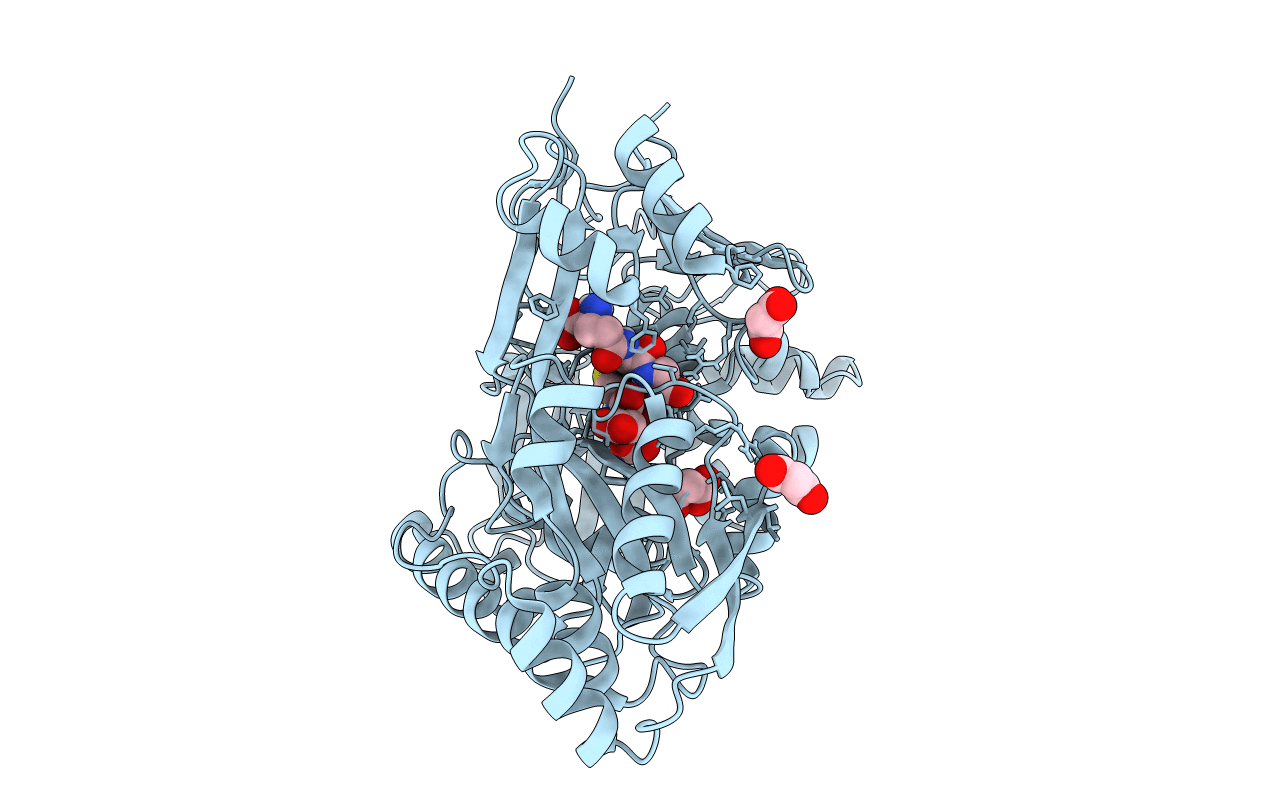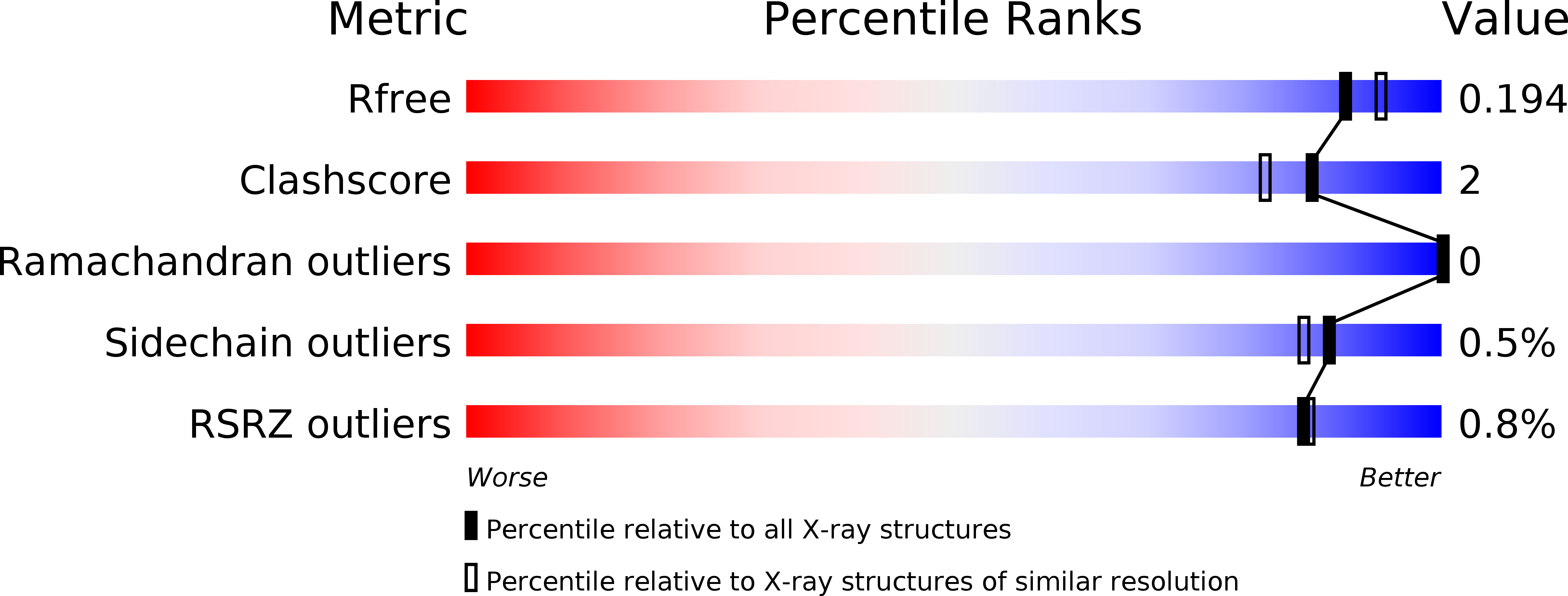
Deposition Date
2010-03-19
Release Date
2010-07-14
Last Version Date
2024-11-13
Entry Detail
PDB ID:
3M8U
Keywords:
Title:
Crystal structure of glutathione-binding protein A (GbpA) from Haemophilus parasuis SH0165 in complex with glutathione disulfide (GSSG)
Biological Source:
Source Organism:
Haemophilus parasuis (Taxon ID: 557723)
Host Organism:
Method Details:
Experimental Method:
Resolution:
1.85 Å
R-Value Free:
0.18
R-Value Work:
0.15
R-Value Observed:
0.15
Space Group:
P 21 21 21


